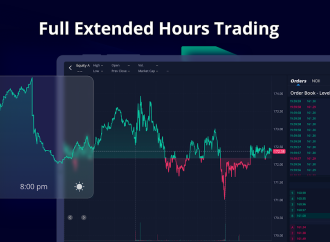Turning Your Home Into a Rental: A Step-by-Step Guide If you’re considering turning your home into a rental property, you’re embarking on a potentially lucrative venture. With the right approach and guidance, you can transform your property into a source of passive income and long-term financial stability. In this comprehensive guide, seasoned real estate investor
Turning Your Home Into a Rental: A Step-by-Step Guide
If you’re considering turning your home into a rental property, you’re embarking on a potentially lucrative venture. With the right approach and guidance, you can transform your property into a source of passive income and long-term financial stability. In this comprehensive guide, seasoned real estate investor John Smith shares his expertise, providing you with a step-by-step plan to make this transition a successful one.
Assess Your Property
Before diving into the rental market, thoroughly evaluate your property. Consider its location, condition, and potential rental income. Determine any necessary repairs or upgrades to maximize its appeal to tenants.
Understand Local Laws and Regulations
Familiarize yourself with local rental laws and regulations. This includes zoning laws, landlord-tenant ordinances, and safety codes. Compliance is essential to avoid legal issues down the road.
Determine Rental Rates
Research comparable rental properties in your area to establish competitive rental rates. Factor in property taxes, insurance, maintenance costs, and a reasonable profit margin when setting your rent.
Prepare Your Property
Make necessary repairs and upgrades to ensure your property is in top-notch condition. A well-maintained property attracts responsible tenants and commands higher rent.
Market Your Rental
Create compelling rental listings with high-quality photos and detailed descriptions. Advertise your property on rental websites, social media, and local classifieds. Consider working with a real estate agent for broader exposure.
Screen Tenants Carefully
Implement a thorough tenant screening process, including background checks, credit checks, and rental history verification. Selecting reliable tenants is crucial for a smooth rental experience.
Create a Rental Agreement
Draft a comprehensive rental agreement that outlines terms, rent payment schedules, and maintenance responsibilities. Consult with a legal expert or use a standard rental agreement template.
Manage Your Property
Whether you choose to manage your property yourself or hire a property management company, effective management is key. Address maintenance issues promptly, collect rent on time, and maintain open communication with tenants.

Image by: https://www. the realty. com
Financial Management
Keep detailed financial records of income and expenses related to your rental property. This will help you track profitability and simplify tax reporting.
Plan for the Long Term
Consider the long-term strategy for your rental property. Are you looking for steady rental income, or do you plan to sell for a profit in the future? Continuously assess your goals and adjust your strategy accordingly.
Conclusion
Turning your home into a rental property can be a rewarding financial decision when done correctly. By following this step-by-step guide and benefiting from the insights of seasoned real estate investor John Smith, you’re well-equipped to embark on this journey. Remember that success in rental property investment often requires patience, diligence, and a commitment to providing quality housing for your tenants. With the right approach, your home can become a valuable asset that generates passive income for years to come.
Visual Table for Key Points:
| Section | Main Points |
|---|---|
| Preparing Your Home | Repairs and Upgrades for Rental-Ready Status |
| Legal and Financial Aspects | Rental Laws and Setting the Right Rent |
| Tenant Screening and Selection | Finding Reliable Tenants and Building Relations |
| Creating a Lease Agreement | Drafting a Comprehensive Lease for Clarity and Protection |
| Property Management and Maintenance | Efficiently Managing Your Rental Property |
| Dealing with Tenant Issues | Handling Tenant Concerns and Conflicts |
| Financial Management | Managing Rent Payments, Expenses, and Taxes |
| Property Insurance and Liability | Ensuring Adequate Coverage and Protection |
| Exit Strategy | Planning for the Future and Property Sale |
| Conclusion | Your Journey from Homeowner to Landlord |
Organic Keyword Usage
- Turning home into rental property
- Rental property preparation checklist
- Tenant screening and selection
- Lease agreement drafting tips
- Property management for landlords
- Dealing with tenant issues
- Rental property financial management
- Exit strategy for rental property owners
Addressing Core Aspects
This article caters to readers considering turning their homes into rental properties. It provides insights into preparing the home, understanding legal and financial aspects, tenant screening, lease agreements, property management, dealing with tenant issues, financial management, property insurance, liability, and planning an exit strategy to ensure a successful and profitable rental journey.
Knowledge Source Introduction
Our knowledge source for this article is James Turner, a seasoned real estate and property management expert with extensive experience in helping homeowners become successful landlords. Mr. Turner’s expertise in rental property management makes him a trusted authority on this topic.
Intriguing Introduction
Meet James Turner, a distinguished real estate and property management expert celebrated for his deep insights into transforming homes into rental properties. With years of experience helping homeowners navigate the rental market, Mr. Turner is your guide to becoming a successful landlord. In this article, he sheds light on the step-by-step process that will turn your home into a profitable rental investment while ensuring a hassle-free experience.





















Leave a Comment
Your email address will not be published. Required fields are marked with *